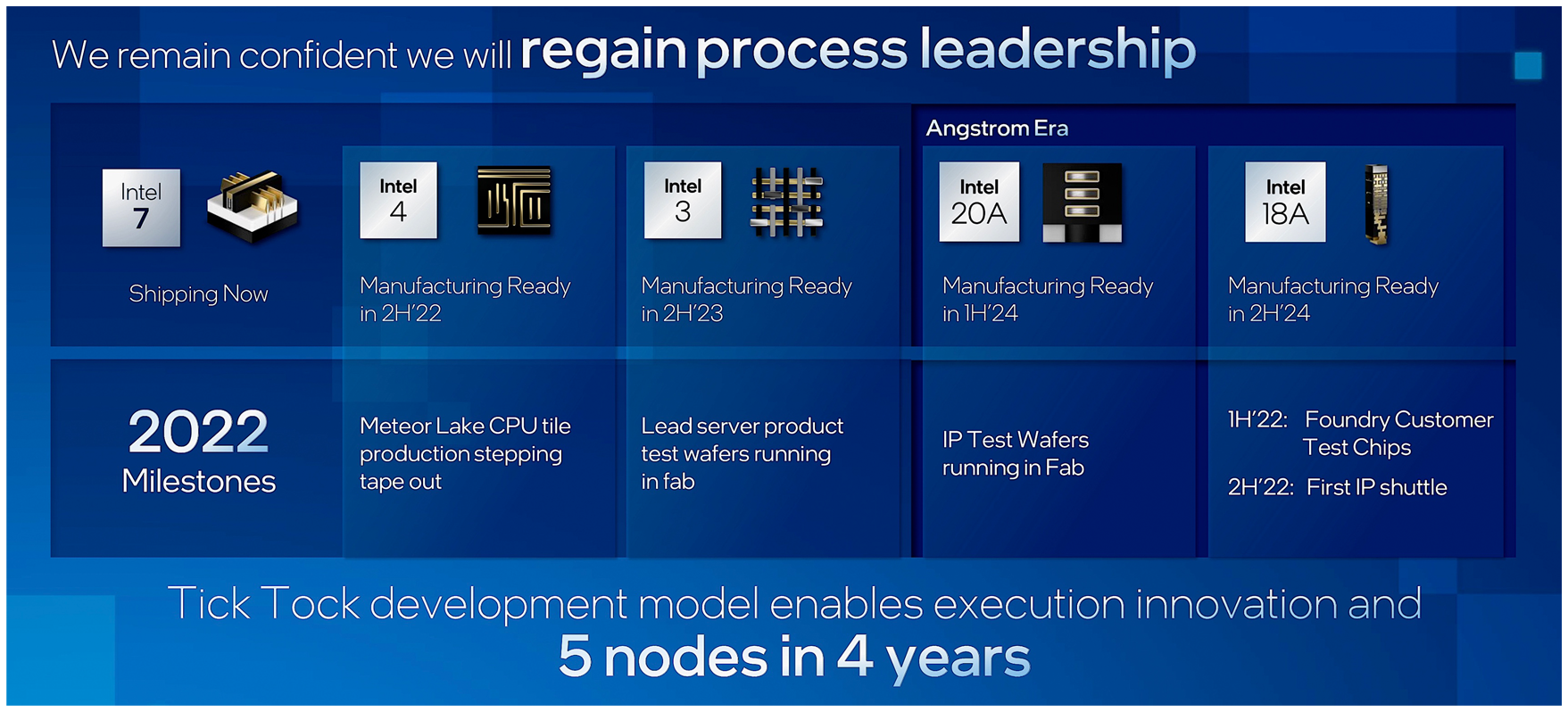No doubt you have your views about the TikTok video platform, but years before we knew that name Intel unleashed the similarly-named Tick Tock, which was an entirely different animal. It started life as a description of a cadence of a new fabrication process node followed by an enhancement of the node but soon became an embarrassment as Intel got stuck at 14nm, 14nm+, 14nm++ and 14nm+++.
Intel has broken the log jam with the 10nm and Intel 7 processes, however we wonder whether they will be able to catch up with TSMC, AMD, Apple and Nvidia. This is a huge and vexed question but there is a specific point we can address; is Intel able to deliver five nodes in four years?
Timestamps:
00:00 Start
01:23 Where did Intel go wrong?
12:24 What is the Fix?
14:13 Delivering on their roadmap, does that fix the problem?
20:45 Summary
21:29 Does this actually matter? Intel vs. TSMC, Samsung, AMD, Nvidia, Amazon, RISC V, Meta and Apple.
26:41 Closing Thoughts
Intel process slide
Leo's notes
Prologue
Over the years Intel has supplied the world with processors and has made fortunes, however the tide has turned.
Who can save Intel from these dire problems – or might they be die problems?- the most likely answer is CEO Pat Gelsinger.
Chapter 1 – Where did Intel go wrong?
Let's pin the blame on delays to their 10nm process.
In 2008 when Pat Gelsinger was Intel's CTO he said that Intel saw a clear way towards the 10nm node.
In 2009 Gelsinger left Intel working first at EMC and then at VMWare before he returned to Intel in 2021 as CEO.
Chapter 2 – What is the Fix?
Five Nodes in Four Years
Disaggregation of design and process
Increased emphasis on packaging
Chapter 3 – If Intel is able to deliver its roadmap, does that fix the problem?
Chapter 4 – Does it matter?
Intel vs. TSMC, Samsung, AMD, Nvidia, Amazon, RISC V, Meta and Apple.
Consumers buy products rather than process nodes or technologies
KitGuru says: Do you think Intel can get the edge over TSMC and Samsung? Let us know your thoughts in the comments.
 KitGuru KitGuru.net – Tech News | Hardware News | Hardware Reviews | IOS | Mobile | Gaming | Graphics Cards
KitGuru KitGuru.net – Tech News | Hardware News | Hardware Reviews | IOS | Mobile | Gaming | Graphics Cards



